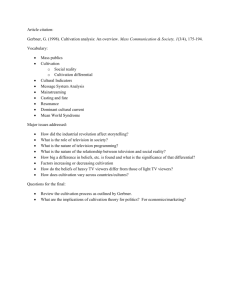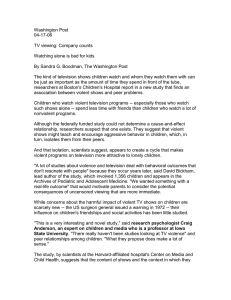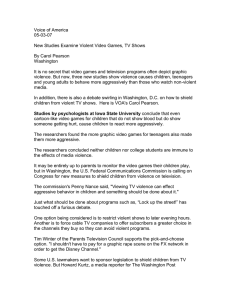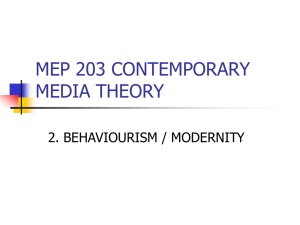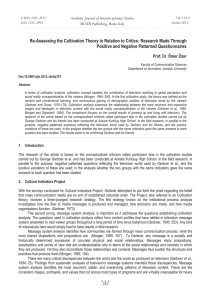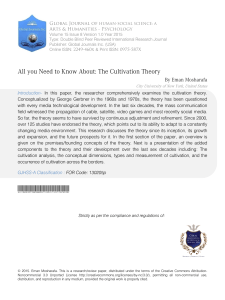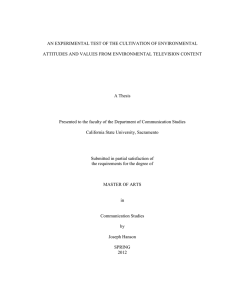A QUASI-EXPERIMENTAL STUDY OF CULTIVATION THEORY A RESEARCH PROPOSAL
advertisement
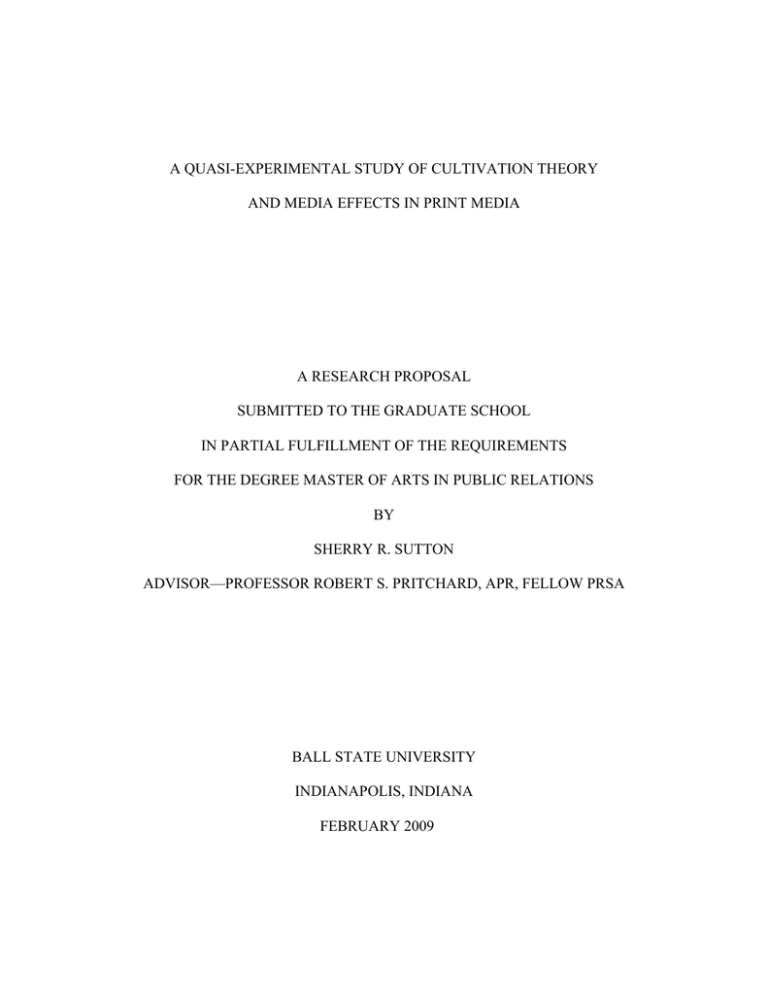
A QUASI-EXPERIMENTAL STUDY OF CULTIVATION THEORY AND MEDIA EFFECTS IN PRINT MEDIA A RESEARCH PROPOSAL SUBMITTED TO THE GRADUATE SCHOOL IN PARTIAL FULFILLMENT OF THE REQUIREMENTS FOR THE DEGREE MASTER OF ARTS IN PUBLIC RELATIONS BY SHERRY R. SUTTON ADVISOR—PROFESSOR ROBERT S. PRITCHARD, APR, FELLOW PRSA BALL STATE UNIVERSITY INDIANAPOLIS, INDIANA FEBRUARY 2009 I. PROPOSAL According to Romer, Jamieson, and Aday (2003), cultivation theory suggests widespread fear of crime is fueled in part by heavy exposure to violent programming on prime-time television, especially, local television news shows. The cultivation theory and media effects theory go hand-in-hand. Media effects explore the exposure of symbols of violence in various causes increased aggression and violence in the audience. Much research has been conducted on the effects cultivation theory has on heavy television users; however, very little research has been conducted on the cultivation theory’s effects on heavy newspaper and other print media audiences and the positive and negative effects it has on the public relations industry. This study will explore the application of the cultivation theory and media effects in print media. Research will include a literature review, as well as a quasi-experimental design that will test the proposed hypotheses. Two hypothesizes are proposed to explore the application of the cultivation and media effects theories in print media: H1: Readers of violent news articles published in print media, will perceive their world as more violent than readers of neutral and non-violent news articles. H2: Readers of violent news articles published in print will be more fearful of the world than readers of neutral and non-violent news articles. The quasi-experimental research will evaluate two groups of 20 subjects; a control group and an experimental group. Subjects will be divided according to their last name. Those with a last name beginning with A through N were placed in the control group. Those with a last name beginning with O through Z were placed in the experimental group. Each group will complete a 30 minute pre-survey to assess their perceptions of and attitudes on local crime and violence before the experimental treatment. The experimental group will review newspaper articles heavily saturated with crime and violence. The control group will read articles that contain positive and/or neutral content pertaining to local violence. A 30 minute post-survey will be conducted to assess their perceptions and attitudes following the treatment. Each participant must be between the ages of 18 and 65, be able to read at the third grade level, and reside in central Indiana. Pre-test and post-test survey results will be compared to test the hypotheses. REFERENCE Romer, Daniel, Katherine Hall Jamieson, and Sean Aday. 2003. Television News and the Cultivation of Fear of Crime. Journal of Communication 53 (March 2003):88-104.

